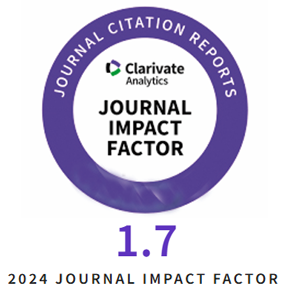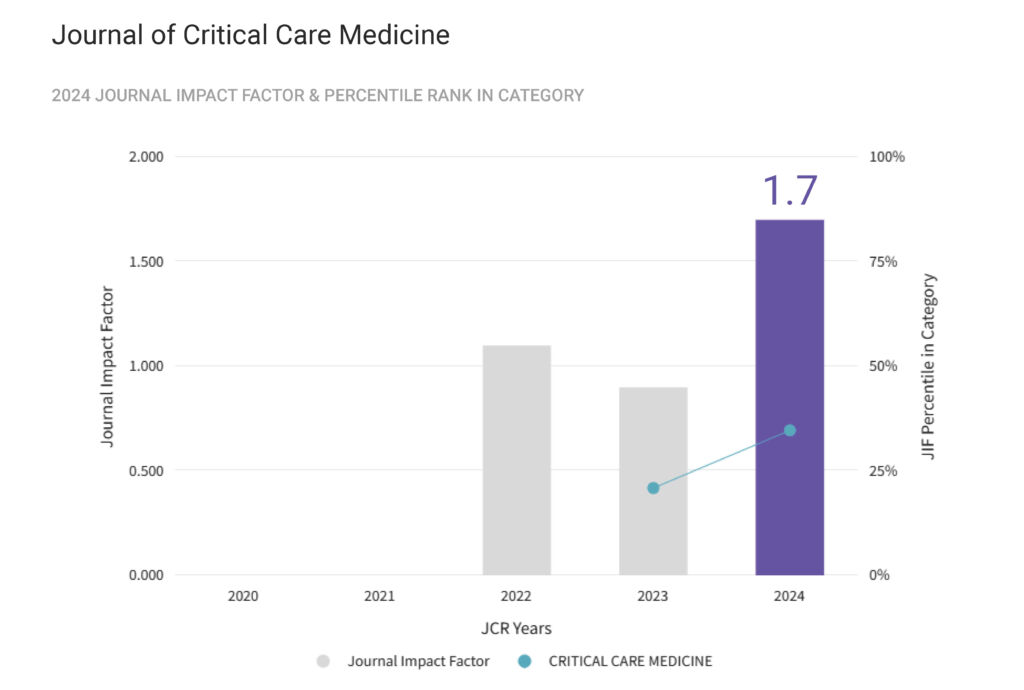Introduction: Right heart thrombus (RiHTh) can be considered a rare and severe condition associated with thromboembolic phenomena. A case is described of a COVID-19 patient presenting with an isolated thrombus in the right ventricle.
Case presentation: An 80-years-old Caucasian male was admitted in an intensive care unit (ICU) for COVID-19 related acute respiratory distress syndrome. The patient showed signs of hemodynamic instability, elevated cardiac troponin I and altered coagulation. On further assessment, a thrombotic mass near the apex of the right ventricle was detected. Moreover, the apex and the anteroseptal wall of the right ventricle appeared akinetic. Following the administration of a therapeutic dose of unfractionated heparin over a forty-eight hour period, re-evaluation of the right chambers showed that the thrombotic mass had resolved entirely.
Conclusion: COVID-19 patients could constitute a population at risk of RiHTh. Routine use of echocardiography and a multidisciplinary approach can improve the management of this condition.
Author Archives: administrare
Acute Eosinophilic Pneumonia Due to Vaping-Associated Lung Injury
A case is described of a 29-year-old female who presented with acute hypoxic respiratory failure due to acute eosinophilic pneumonia, associated with the use of electronic cigarettes to vape tetrahydrocannabinol (THC), together with the contemporary clinical understanding of the syndrome of electronic-cigarette associated lung injury (EVALI). Attention is drawn to acute eosinophilic pneumonia as a potential consequence of vaping-associated lung injury to understand the diagnostic evaluations and therapeutic interventions for acute eosinophilic pneumonia associated with vaping THC.
Cardiopulmonary Arrest Following a Single 25 mg Dose of Quetiapine: A Case Report
Introduction: Quetiapine is commonly used in intensive care units (ICU) to treat delirium. Cardiopulmonary arrest caused by low dose quetiapine is unreported. Only two cases in the literature have reported acute respiratory failure after single doses of 50mg and 100mg respectively. We report a case of cardiopulmonary arrest in a patient after the administration of a single 25mg dose of quetiapine.
Case presentation: A 72-year-old Chinese female with multiple cardiovascular co-morbidities was admitted to the ICU intubated, following complications from an elective endovascular repair of an infrarenal abdominal aortic aneurysm. She was alert and extubated the following day. She subsequently showed signs of delirium and was administered a single 25mg dose of oral quetiapine. Seven hours after ingestion, she developed type 2 respiratory failure and eventually cardiopulmonary arrest. She was successfully resuscitated and other causes for cardiopulmonary arrest were excluded. Twenty-four hours following her cardiopulmonary arrest, her respiratory failure had completely reversed and she was extubated uneventfully.
Conclusion: This case report demonstrates that a single dose of oral quetiapine 25mg is sufficient to cause respiratory failure and cardiopulmonary arrest. Caution is advised when prescribing quetiapine in the elderly, especially in those with impaired drug clearance.
Hemoadsorption in Critical Care – It Is a Useful or a Harmful Technique?
Since ancient times it has been known that elimination of toxins from the body helps to relieve symptoms, heal patients; for that hot baths, sweating techniques, enemas, and phlebotomy were used in the treatment of severe diseases.
Blood purification is still practiced today, but using modern techniques. The theoretical basis for the elimination of toxins by osmosis and dialysis through a semipermeable membrane was laid by Thomas Graham in the 19th century, but the first “artificial kidney”, was built and used successfully by Kolff only in 1943, in patients with acute renal failure.
Since then, blood purification has developed a lot, today it is possible to eliminate endo- and exotoxins in acute and chronic renal failure, liver failure, intoxications with various substances, but also the elimination of mediators formed in excess in sepsis and systemic inflammatory syndrome of other etiologies, and elimination of immune complexes in autoimmune and graft versus host diseases.
The Prolonged Use of VV ECMO Support in COVID-19: A Case Report
COVID-19 has resulted in unprecedented global health and economic challenges. The reported mortality in patients with COVID-19 requiring mechanical ventilation is high. VV ECMO may serve as a lifesaving rescue therapy for a minority of patients with COVID-19; however, its impact on overall survival of these patients is unknown. To date, few reports describe successful discharge from ECMO in COVID-19 after a prolonged ECMO run. The only Australian case of a COVID-19 patient, supported by prolonged VV ECMO in conjunction with prone ventilation, complicated by significant airway bleeding, and successfully decannulated after forty-two days, is described. VV ECMO is a resource-intense form of respiratory support. Providing complex therapies such as VV ECMO during a pandemic has its unique challenges. This case report provides a unique insight into the potential clinical sequelae of COVID-19, supported in an intensive care environment which was not resource-limited at the time, and adds to the evolving experience of prolonged VV ECMO support for ARDS with a goal to lung recovery.
Rhabdomyolysis-Induced Acute Renal Injury in a Schizophrenic Patient
Nowadays, schizophrenia is treated with atypical antipsychotics that can determine neuroleptic malignant syndrome or rhabdomyolysis appearance. In addition to trauma and muscular hypoxia, there are some drugs and toxins associated with rhabdomyolysis development, among which olanzapine. A case of severe rhabdomyolysis syndrome, with extremely high levels of serum creatine kinase (CK), followed by acute kidney failure, secondary to olanzapine overdose and prolonged immobilization is outlined. Continuous renal replacement therapy was performed, with a slow clearance of serum CK levels. Under supportive therapy, systemic alkalinisation with volume resuscitation and corticotherapy, patient’s general condition was improved, as well as his lower limb paresis. He followed frequent psychiatric evaluations and psychotherapies, before and after being transferred to a medical service. Rhabdomyolysis diagnosis is difficult in mild cases due to non-specific signs and symptoms, but it also has some typical manifestation, generically called “the rhabdomyolysis syndrome triad”. The treatment is usually supportive; renal replacement therapy is required in the presence of acute kidney injury unresponsive to aggressive volume resuscitation. The systemic myoglobin release is responsible for renal injury. Olanzapine muscle toxicity can lead to severe rhabdomyolysis syndrome complicated with acute kidney injury and multiple organ dysfunction syndrome. Rapid identification and aggressive therapeutic management are essential for improving patients’ outcome and prevent the occurrence of irreversible injuries.
Anticoagulation in COVID – 19: An Update
The novel coronavirus disease, 2019 (COVID – 19) evolved as an unprecedented pandemic. The severe acute respiratory syndrome-corona virus-2 (SARS-CoV-2) infection has been associated with significantly deranged coagulation parameters and increased incidence of thrombotic events. Deranged coagulation parameters, such as D-dimers and fibrin degradation products, can indicate a poor prognosis, and their measurement will help stratify the patients according to the disease severity, need of intensive care unit admission, and prediction of the clinical course. Gaps in understanding the natural history of the disease cause difficulties in tailoring therapies and optimizing the management of patients. Lack of specific treatment further complicates this situation. While thrombotic events can cause significant morbidity and mortality in patients, a focused approach to the prevention and treatment of venous thromboembolism (VTE) can, to a great extent, decrease the disease burden caused by thrombotic diseases. Pharmacological prophylactic anticoagulants and mechanical therapies such as pneumatic compression devices can help prevent venous thromboembolism and other thrombotic events. Thrombotic events due to COVID-19, their prevention and management, are the focus of this paper, with the prospect of providing insights into this relatively unexplored area.
Bilateral Ocular Exophthalmia – A Case of Atypical Acute Myeloblastic Leukemia in a Child
Introduction: In acute myeloblastic leukaemia (AML) explosive proliferation and accumulation of immature myeloid cell clones take place, replacing the bone marrow, with the possibility of the formation of extramedullary tumour masses composed of myeloid cells. The onset of the disease less frequently consists of symptoms of extramedullary manifestation.
Case presentation: A Caucasian male child aged three years and 11 months was hospitalized for bilateral exophthalmos and otorrhea, due to an alteration in his general condition. Ocular ultrasound revealed an inhomogeneous thickening of the upper right muscles superior to the eyeball. A complete blood count showed severe anaemia, leucocytosis with neutropenia and thrombocytopenia. A peripheral blood smear evidenced myeloblasts. The result of the cytology of bone marrow confirmed the diagnosis of AML. Following blood product replacements and cytostatic treatment (AML-BFM 2004 HR protocol), the remission of exophthalmos and the correction of haematological parameters were favourable.
Conclusion: In a child with a sudden onset of exophthalmia and altered general condition, the diagnosis of acute leukaemia should be considered. The importance of performing a peripheral blood smear and bone marrow examination is emphasized so that diagnosis and initiation of treatment are not delayed.
Feasibility and Safety of Peripheral Intravenous Administration of Vasopressor Agents in Resource-limited Settings
Background: Vasopressors are conventionally administered through a central venous catheter (CVC) and not through a peripheral venous catheter (PVC) since the latter is believed to be associated with increased risk of extravasation. Placement of a CVC requires suitably trained personnel to be on hand, and in resource-limited settings, this requirement may delay placement. Because of this and in cases where suitably trained personnel are not immediately available, some clinicians may be prompted to utilise a PVC for infusing vasopressors. The objective of this study is to assess the feasibility and safety of vasopressors administered through a PVC.
Materials and methods: Patients who received vasopressors through a PVC for more than one hour were included in a single centre, consecutive patient observational study. Patients with a CVC at the time of initiation of vasopressors were excluded. Data regarding the size, location of PVCs, dose, duration and number of vasopressors infused were recorded. The decision to place CVC was left to the discretion of the treating physician. Extravasation incidents, severity and management of such events were recorded.
Results: One hundred twenty-two patients age 55(4) years [mean (SD)] were included in the study. The commonest PVC was of 18G calibre (57%), and the most common site of placement was the external jugular vein (36.5%). Noradrenaline was the most common vasopressor used at a dose of 10.6 (7) mcg/min [mean (SD)] and the median duration of nine hours (IQR: 6-14). CVC was placed most commonly due to an increasing dose of vasopressors after 4.5(4) hours [mean (SD)]. Grade 2 Extravasation injury occurred in one patient after prolonged infusion of fifty-two hours, through a small calibre (20G) PVC, which was managed conservatively without any sequelae.
Conclusion: Vasopressors infused through a PVC of 18G or larger calibre into the external jugular, or a forearm vein is feasible and safe. Clinicians need to balance the safety of peripheral vasopressor infusion with the additional costs and complications associated with CVC in resource-limited settings.
Role of Transesophageal Echocardiography in the Diagnosis of Multi-chamber Intracardiac Thrombosis During Liver Transplantation: A Case Series
Intra-cardiac thrombosis is one of the most devastating complications during liver transplantation. In the majority of cases, ICT, followed by massive pulmonary embolism, is commonly occurring shortly after liver graft reperfusion, but it has been reported to occur at any stage of the surgery. We present a series of 3 cases of intra-cardiac thrombosis during orthotopic liver transplantation surgery, including a case of four-chamber intra-cardiac clot formation during the pre-anhepatic stage. This article represents a single-centre 14 year-long experience. Intra-operative TEE is the gold standard to diagnose intra-cardiac thrombosis, monitoring its size, location and dynamics, as well as myocardial performance and the effects of resuscitation efforts.










